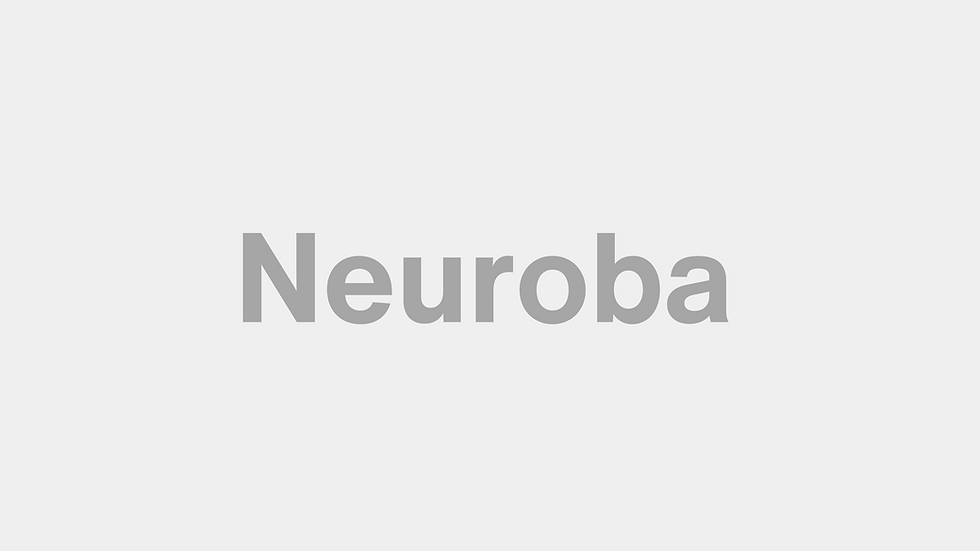How Wearable Neurodevices Are Changing Workplace Productivity | Neuroba
- Neuroba

- Jan 25
- 4 min read
In the modern era, the workplace is evolving at an unprecedented pace, driven by advancements in technology, AI, and neurotechnology. One of the most promising developments in this landscape is the emergence of wearable neurodevices, which are poised to revolutionize productivity and efficiency in professional environments. These devices, which monitor and interact with brain activity in real-time, are becoming indispensable tools in optimizing cognitive performance, emotional regulation, and overall well-being in the workplace. As Neuroba explores new frontiers in brain-computer interfaces (BCIs) and quantum communication, wearable neurodevices are set to play a pivotal role in reshaping how employees approach work and how organizations measure and enhance performance.
The Science Behind Wearable Neurodevices
Wearable neurodevices are designed to monitor and stimulate brain activity using sensors and other sophisticated technologies. These devices, typically worn on the head, can track neural signals associated with cognitive states such as focus, stress, and mental fatigue. By capturing electroencephalography (EEG) data and other physiological markers, these devices provide valuable insights into the user’s mental state and cognitive function.
The data collected by wearable neurodevices is analyzed using advanced algorithms and machine learning models, which can provide real-time feedback on brain activity. This feedback can be used to optimize work habits, promote mental clarity, and reduce cognitive overload, ultimately contributing to improved workplace productivity.
Enhancing Cognitive Focus and Mental Clarity
One of the most significant benefits of wearable neurodevices in the workplace is their ability to enhance cognitive focus. Many employees struggle with maintaining attention and concentration over long periods, leading to mental fatigue and decreased productivity. Wearable neurodevices can provide insights into when an individual is losing focus or becoming mentally fatigued. With this data, employees can take proactive measures to re-establish concentration, whether through mindfulness exercises, taking breaks, or adjusting their work environment.
For instance, devices such as EEG headbands can measure the brain’s activity and detect when focus begins to wane. By alerting the wearer, these devices encourage them to take corrective actions, such as engaging in cognitive-enhancing tasks or employing techniques like deep breathing or meditation to refocus. This targeted approach to managing cognitive states leads to increased efficiency and a more productive workday.
Reducing Stress and Improving Emotional Regulation
Stress is one of the most prevalent challenges in modern workplaces, and it is known to have a significant impact on both cognitive performance and overall productivity. Prolonged stress can lead to burnout, anxiety, and other mental health issues, which not only affect the well-being of employees but also undermine organizational performance. Wearable neurodevices offer a promising solution for managing and reducing stress.
By monitoring real-time data from the brain, wearable neurodevices can identify signs of elevated stress levels—such as increased theta or beta wave activity. These devices can then offer personalized interventions, such as relaxation techniques, breathing exercises, or biofeedback that help employees regulate their emotions and return to a more productive mental state.
The ability to monitor and manage stress through wearable neurodevices empowers employees to stay mentally resilient and focused, even in high-pressure situations. This is especially crucial in industries that require high levels of cognitive performance, such as tech, finance, and healthcare.
Boosting Creativity and Problem-Solving Skills
Creativity and innovation are at the heart of every successful organization, yet fostering these cognitive processes can be challenging. Wearable neurodevices can be leveraged to boost creative thinking by helping individuals tap into the right brainwave states. Research has shown that certain brainwave frequencies, particularly alpha and theta waves, are associated with creative insight and problem-solving abilities.
By providing real-time feedback on the wearer’s brain activity, wearable neurodevices can help employees shift into these creative states when tackling complex problems or brainstorming new ideas. For instance, if a wearable neurodevice detects that a user’s brain is operating in a state of mental blockage or cognitive overload, it can suggest techniques such as mindful pauses or cognitive reframing to facilitate creative thinking.
As organizations recognize the importance of creativity in driving innovation, wearable neurodevices will play an increasingly vital role in helping employees unlock their full cognitive potential.
Optimizing Work-Life Balance
Another powerful aspect of wearable neurodevices is their ability to help employees maintain a healthy work-life balance. Overworking and lack of rest are common contributors to cognitive burnout and decreased productivity. By tracking metrics such as sleep quality, mental fatigue, and emotional health, wearable neurodevices can provide valuable insights into when an employee may need to take a break or disconnect from work.
With these insights, employees can make informed decisions about when to rest or engage in recovery activities that promote mental well-being. For example, wearable devices can encourage employees to take breaks based on their current mental state, ensuring that they are not overexerting themselves and thereby preventing long-term productivity loss.
The Future of Wearable Neurodevices in the Workplace
As neurotechnology continues to advance, wearable neurodevices are likely to become even more sophisticated and integrated into workplace environments. With the rise of brain-computer interfaces (BCIs) and AI-powered analytics, the potential for these devices to enhance productivity, health, and creativity is limitless. Companies will be able to leverage data from wearable neurodevices to create more customized and personalized work environments that support individual cognitive and emotional needs.
At Neuroba, we are committed to advancing wearable neurotechnology, integrating it with AI, brain-computer interfaces, and quantum communication to create innovative solutions that improve cognitive performance, reduce stress, and foster creativity in the workplace. By connecting human consciousness with cutting-edge technology, wearable neurodevices will enable a new era of productivity and well-being.

Neuroba: Pioneering neurotechnology to connect human consciousness.